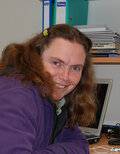After several years of work as professor in secondary schools in Italy, Elisabetta Caffau obtained a PhD in observational astronomy from Paris Observatory in 2009. After a one year post-doctoral position in Paris Observatory, E. Caffau obtained the Gliese fellowship Grant in 2010. E. Caffau has developed a method to obtain high precision abundances of the elements from 3D hydrodynamical computations. With the infrared spectrograph CRIRES at ESO/VLT, she measured the phosphorus abundance of twenty cool stars in the Galactic disk for the first time. In 2013 she was honored with the 2013 MERAC Prizes for the Best Early Career Researcher in Observational Astronomy for the discovery of a very primitive low-mass star in our Galaxy.
Gliese Fellowship Programm
The annually advertised Gliese Postdoctoral Fellowship Program of the Zentrum für Astronomie der Universität Heidelberg (ZAH) is named in honor of Wilhelm Gliese (1915 - 1993) and his pioneering astrometric studies of stars in the solar neighborhood.
The Gliese Postdoctoral Fellowship provides a competitive stipend and a generous research budget for up to three years (initially awarded for two years) to outstanding postdoctoral researchers in any area of astronomy or astrophysics in which scientists at ZAH are active.
The goal of the Gliese Fellowship is to offer scientists typically within a few years after receipt of their PhD the best possible opportunities to develop their talents within a fruitful and inspiring scientific environment. Gliese Fellows enjoy great freedom in their research activities.
The ZAH has welcomed the following Gliese Fellows in recent years:
Gliese Fellow 2025: Dr Natalia Lahén

Dr Natalia Lahén started her new position as Gliese Fellow 2025 at the Astronomisches Rechen-Institut (ARI) on October 1, 2025
Dr. Natalia Lahén carried out her PhD and graduated in 2020 at the University of Helsinki, Finland. Her thesis was on the topic of starburst galaxies and star cluster formation using hydrodynamical simulations and synthetic observations. Dr. Lahén won the Väisälä Prize (https://www.ttseura.fi/prize.html) for an outstanding PhD thesis in astronomy awarded by the Finnish Astronomical Society. Between 2020-2025 Dr. Lahén held an independent postdoctoral research fellowship at the Max-Planck-Institute for Astrophysics, Germany.
The work of Dr. Lahén approaches galaxy evolution as a multi-scale challenge through the development and analysis of hydrodynamical simulations. Her focus is on the formation and evolution of stars and star clusters in a galactic ecosystem and how stars impact their environment through the release of energy and chemical elements into the interstellar medium. She uses the GADGET-3 hydrodynamical galaxy evolution code and often combines synthetic observations and observational data reduction techniques in her work.
Phone +49(6221) 54 1819 E-Mail natalia.lahen(at)uni-heidelberg.de Office Bibliotheksbau, Room B.1-04
Gliese Fellow 2023: Dr. Tadafumi Matsuno

Dr. Tadafumi Matsuno will start his new position as Gliese Fellow 2023 at the Astronomisches Rechen-Institut (ARI) on October 1, 2023.
He carried out his PhD at the National Astronomical Observatory of Japan and obtained a PhD from The Graduate University for Advanced Studies, SOKENDAI in Japan in 2020. He was awarded a SOKENDAI award for his outstanding PhD research and excellent thesis. He then moved to Kapteyn Institute, University of Groningen in the Netherlands, where he worked for three and a half years.
Dr Matsuno mainly studies old, low-metallicity stars in the Milky Way to understand the origin of elements and the formation history of the Milky Way. He also contributes to spectroscopic surveys, such as 4MOST, WEAVE, and WST.
Phone +49(6221) 54 tbd E-Mail tadafumi.mn(at)gmail.com Office tbd
Personal homepage: https://tadafumimn.wixsite.com/tadmatsuno
Gliese Fellow 2022: Dr. Silvia Martoccia

Dr. Silvia Martocchia started her new position as Gliese Fellow 2022 at the Astronomisches Rechen-Institut (ARI) on August 1, 2022..
After spending her master thesis studying the powerful active nuclei of galaxies (AGN), she moved to Liverpool John Moores University for a PhD about multiple stellar populations in globular clusters. She then obtained an ESO studentship and managed to spend half of her PhD at the ESO headquarters, in Garching, Germany. After her PhD, she worked for one year and a half as an Excellence Fellow at Radboud University, in Nijmegen, the Netherlands.
Her main research interests are mainly focused on understanding the phenomenon of multiple populations in star clusters. However, she is also interested in stellar evolution and nuclear star clusters as well as in the impact of active nuclei on their host galaxies.
Personal website: https://sites.google.com/view/astro-silvia-martocchia/home
Phone +49(6221) 54 1870 E-Mail silvia.martocchia(at)uni-heidelberg.de Office Weberstr. 13, Room W.E-05
Gliese Fellow 2021: Dr Ivan Cabrera-Ziri
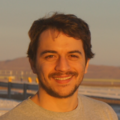
Dr Ivan Cabrera-Ziri started his new position as Gliese Fellow 2021 at the Astronomisches Rechen-Institut (ARI). Dr. Ivan Cabrera-Ziri carried out his PhD between Liverpool John Moores University and the European Southern Observatory in Garching. In 2017 his thesis work got awarded the prize for the best thesis of the Faculty of Engineering and Technology of Liverpool John Moores University, and was the runner up for the Royal Astronomical Society's Michael Penston Thesis Prize for the best doctoral thesis in astronomy. Before arriving to the ZAH he was a Hubble Fellow at The Center for Astrophysics at Harvard University.
His main scientific interests are the formation and evolution of star clusters and their chemical properties, in particular how to use the properties of globular clusters to trace the build up of galaxies.
Dr. Cabrera-Ziri will spend his fellowship at ZAH/ARI which started on August 1, 2021.
E-Mail cabrera(at)uni-heidelberg.de
Gliese Fellow 2020: Dr. Giulia Despali
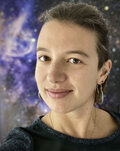
Dr Giulia Despali studied and did her PhD at the University of Padova. The focus of her thesis was the evolution of dark matter halo properties in cosmological simulations and she graduated in 2015. Dr Despali spent 2015 as a visiting researcher at the Laboratoire d’Astrophysique de Marseille (LAM), before moving to Munich and MPA in 2016. Her research focuses on the nature of dark matter and on the connection between computational astrophysics and observational data. She explores the effect of alternative dark matter models, such as warm and self-interacting dark matter on the properties of galaxies and haloes, and compares these with predictions from the standard CDM scenario. In particular, her goal is to use and create state-of-the-art hydrodynamical simulations to study the properties of galaxies at small scales and derive theoretical predictions for the comparison with different observables, such as for example substructure gravitational lensing, the number of satellite or the properties of lens galaxies. Observations from ALMA, JWST, VLBI or E-ELT will provide higher spatial resolution and thus exploring the properties of the matter distribution at small scales with simulations, combining baryons and dark matter, is essential to interpret new data.
Dr. Despali will spend her fellowship at ZAH/ITA and is going to start on Dec. 1, 2020.
For more information visit the Homepage of Giulia Despali.
MPIA Fellow and ZAH Gliese Fellow 2019: Dr. Melanie Habouzit
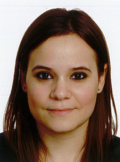
Melanie Habouzit carried out her PhD-studies on the Formation of supermassive black holes in Paris at the Institut d’Astrophysique de Paris (IAP) which she finished in 2016. Subsequently, she moved to New York and became a Flatiron postdoctral fellow at the Center for Computational Astrophysics.
Her research interests lie in the field of galaxy formation and evolution. Dr. Habouzit is particularly interested in understanding how these supermassive black holes form in the very early Universe, and how they grow to produce the variety of black holes that we observe today. Her research also focuses on the connections between the central black holes and their host galaxies, and their co-evolution through cosmic times.
To advance our understanding of the early Universe, she performs large-scale cosmological simulations with her model for the formation of supermassive black holes. These simulations are powerful tools to understand the formation of supermassive black holes, their evolution, their number density, the galaxy black hole occupation fraction. She is actively working on using these simulations and other state-of-the-art large-scale simulations (IllustrisTNG, Horizon-AGN) to prepare upcoming missions such as e.g., JWST, WFIRST, LISA, and Athena.
Dr. Habouzit will spend the first part of her fellowship at MPIA as MPIA/Gliese Fellow and the second part at ZAH/LSW as Gliese/MPIA-Fellow. Her fellowship in Heidelberg is going to start on Nov. 1, 2019.
For more information vist the Homepage of Melanie Habouzit
Gliese Fellow 2018: Dr. Fabian Schneider
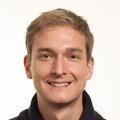
Fabian Schneider studied Astrophysics at the University of Bonn and received his MSc in 2011. Also in Bonn he carried out his PhD-studies which he finished in 2014. Subsequently, he took up his first postdoc position at the Argelander Institute for Astronomy at the University of Bonn. In 2015 he moved to Christ Church College in Oxford (UK) and became Hintze Research Fellow at the Department of Physics of the University of Oxford.
In his work Dr. Schneider studies the evolution and final fates of stars to understand their role in the cosmos and how they transformed the pristine Universe into the one we live in today. His work is mostly of theoretical nature and he makes heavy use of stellar evolution codes, population synthesis models and advanced Bayesian statistical methods.
Fabian Schneider actively participates in large international collaborations (e.g. the VLT-FLAMES Tarantula Survey and the B-fields in OB stars project) where he investigated fundamental questions of stellar evolution. For example, they showed that the evolution of massive stars is dominated by binary stars that exchange mass with their companions or even merge. He further lead the research that discovered that the gigantic 30 Doradus starburst in the Large Magellanic Cloud contains many more massive stars than expected—a discovery that has far-reaching consequences, in particular for the evolution of galaxies and the reionisation of the Universe. For more information vist the Homepage of Fabian Schneider.
Gliese Fellow 2017: Dr. Robert Harris

Robert Harris studied Astrophysics at the University of St. Andrews before changing field to Astronomical Instrumentation for his PhD at Durham University, which he received in 2015. Due to his promising research in the field of astrophotonics, in particular photonic reformatters he was awarded a six month STFC STEP award. This enabled him to conduct further tests, improving the performance of the devices. During this time he was awarded a Carl-Zeiss Stiftung to work at the Landessternwarte at the University of Heidelberg. Here his main scientific interests remain in the field of astronomical instrumentation, particularly photonic reformatting technology, but has now expanded to also include new manufacturing methods and control methods (see also THIS press release). Homepage of Dr. Harris.
Gliese Fellow 2016: Dr. Markus Kromer

Markus Kromer studied Physics at the University of Tübingen and received his PhD from the Technical University of Munich in 2009. In the following years, he worked as a postdoctoral fellow at the Max Planck Institute for Astrophysics in Garching. In 2011, he was awarded the Otto Hahn Medal by the Max Planck Society, recognizing outstanding scientific achievements during his PhD. In 2013, Markus obtained an Oskar Klein Fellowship from Stockholm University and joined their Department of Astronomy. Markus' research revolves around the application and further development of computational radiative transfer methods to link astronomical observations and theoretical astrophysical models. He has developed a massively-parallel computer program to simulate the observable display of the powerful explosions in which stars end their lives. These so called supernova explosions can outshine a whole galaxy with a billion of stars for a short period of time. At the ZAH Markus will lead research projects to investigate the nature of Type Ia supernovae – an observational subclass of supernovae which are important beacons to measure distances in the Universe. In close collaboration with scientists from the PSO group at the HITS, Markus will use theoretical explosion models to shed light on the progenitors and physical mechanisms of these luminous explosions.
Gliese Fellow 2015: Dr. Diederik Kruijssen
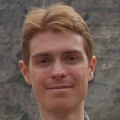
Dr. Kruijssen received his PhD from Utrecht University in 2011, after carrying out his research as an NWO Toptalent Fellow at the universities of Utrecht, Leiden and Cambridge. From 2011 to 2015, he worked as a Postdoctoral Research Fellow at the Max-Planck Institut für Astrophysik in Garching. In 2013, he received the Christiaan Huygens Prize of the Dutch Royal Academy of Sciences for the best Dutch PhD thesis in Astronomy & Space Sciences during the four years 2009-2012. His research interests range from the formation of stars, planets, and globular clusters to the large-scale assembly of stellar mass and galaxy formation. At ZAH Dr. Kruijssen studies the cloud-scale physics of star formation and feedback, covering the formation of globular clusters in the early Universe to galactic star formation at the present day. For this purpose, he will apply novel observational and numerical methods that enable an unprecedented view on the small-scale baryonic physics that drive the large-scale evolution of galaxies.
Gliese Fellow 2014: Dr. Yiannis Tsapras
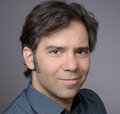
Dr. Tsapras' primary research interests lie in the field of exoplanet science, where he uses the techniques of microlensing and transits to search for planets orbiting distant stars. He is founding member of the RoboNet project which uses the LCOGT telescope network to detect exo-planets by microlensing.
Before he came to ZAH he sated his scientific curiosity working for the LCOGT institute (2007-2014). During the 2012-2014 academic period he was also a Teaching Fellow at the School of Physics and Astronomy, Queen Mary University where he taught Physics for the Science and Engineering Foundation Programme and a MSc course on Extrasolar Planets and Astrophysical Discs. Prior to that, he held a research position at the ARI in Liverpool. Dr. Tsapras has received his PhD from the University of Saint Andrews in 2003.
Gliese Fellow 2013: Dr. Davide Gandolfi
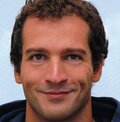
Dr. Gandolfi got his PhD in physics/astronomy from the University of Catania in 2007. His first two years as a postdoc brought him to the Thüringer Landessternwarte in Tautenburg. He also worked as a Research Fellow at the European Space Agency from 2010 to 2012 and as a Marie Curie AstroFIt fellow at the INAF-Catania Astrophysical Observatory in 2013. His main scientific interests focus on the search and characterization of transiting exoplanets within the context of the CoRoT and Kepler space missions, as well as on the study of the mechanisms leading to the formation of the so-called hot Jupiters.
Gliese Fellow 2012: Dr. Simon Murphy
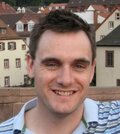
Dr. Simon Murphy received his Ph.D. in July 2012 from the Australian National University's (ANU) Mount Stromlo Observatory. His thesis examined two associations of young stars in the deep southern sky, Eta and Epsilon Chamaeleontis as ideal targets for better understanding the evolution of young stars and their circumstellar disks. Simon Murphy also has a keen interest in the scientific exploitation of the Virtual Observatory and is involved with the SkyMapper survey telescope at Siding Spring Observatory in Australia. During his time at ZAH he continued to work on refining techniques for selecting and characterising young stars from large photometric and proper motion surveys. He also worked closely with the German Astrophysical Virtual Observatory (GAVO) group hosted at ARI to develop new tools for VO-enabled science.
Gliese Fellow 2011: Dr. Frank Bigiel
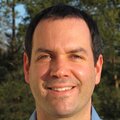
Dr. Frank Bigiels main research topics are Gas and Star Formation in Galaxy Disks, especially Star Formation in Extreme Environments, Molecular Cloud Properties in the Nearby Universe and Fueling Star Formation in Galaxies. Before he came to ZAH he studied Physics at the University of Heidelberg. In 2008 he received his PhD at the Max-Planck-Institute for Astronomy/Univ. of Heidelberg. Afterwards, he worked at the University of California in Berkley. In February 2012 Dr. Bigiel was granted a independent Emmy-Noether Junior Research Group by the DFG.
Gliese Fellow 2010: Dr. Elisabetta Caffau
